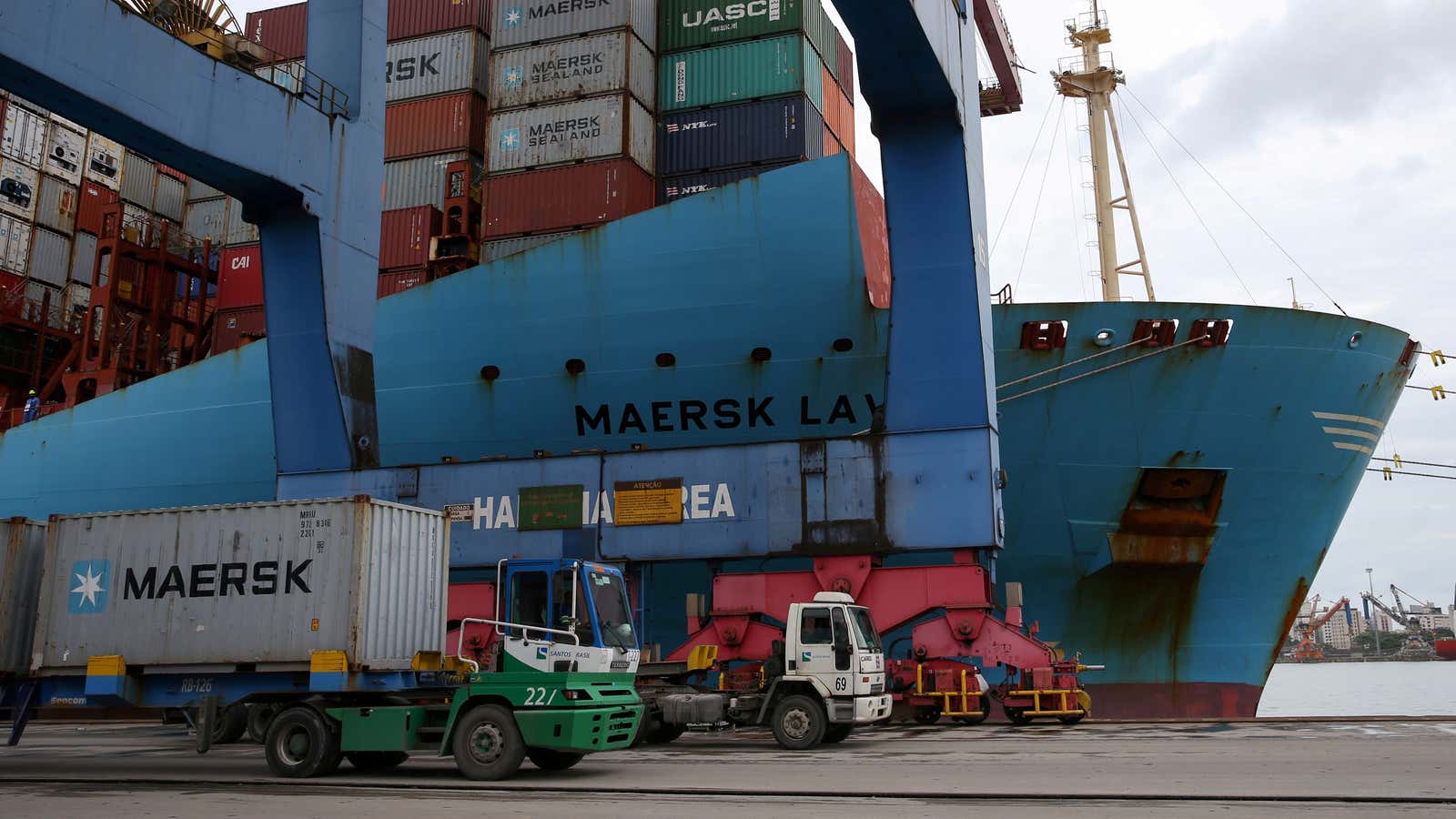Maersk laid out its vision for its post-pandemic future on a Feb. 9 call with investors. As ocean freight prices fall, the shipping giant plans to stake out its business on land through multibillion-dollar investments in trucking, warehousing, and last-mile delivery.
The world’s second largest shipping line is flush with cash. Since the start of the pandemic in 2020, Maersk has earned an unprecedented $21 billion in profits amid supply chain chaos that drove freight prices to record heights. But executives made clear that the boom times are coming to an end. Maersk CEO Søren Skou predicts profits will hold steady through the first half of 2022, before a “normalization” in ocean shipping rates in the second half of the year as covid cases drop, workers return to docks and warehouses, and port bottlenecks ease.
Maersk plans to cash in on the global growth of e-commerce before shipping rates fall. Online shopping exploded during the pandemic as quarantined customers shifted spending away from travel, services, and brick-and-mortar stores. As that trend accelerates, Maersk is planning massive new investments in e-commerce fulfillment. It has already spent more than $5 billion buying trucking, warehousing, and delivery companies worldwide since 2019. Maersk announced that it would spend another $1.7 billion to buy the North American trucking company Pilot Services during its fourth quarter earnings call.
Maersk locks in high shipping rates with long-term contracts
To fund this transformation, Maersk hopes to extend shipping profits as long as possible by locking customers into long-term contracts at elevated rates. In 2020, about half of Maersk’s cargo volume came from so-called “spot” deals, in which clients made one-off agreements with Maersk to buy space on a cargo ship at market rates. Since spot rates rise and fall quickly, rates will start falling immediately if port congestion eases later this year, as Maersk predicts. The other half of Maersk’s 2020 cargo volume came from clients who signed months- or years-long contracts.
But Maersk expects long-term contracts will account for 70% of its cargo volume in 2022. And the price for these contracts is still rising: Maersk CFO Patrick Jany estimated on the call that the average contract rate has risen roughly 90% from about $2,000 per forty-foot container in 2019 to about $3,800 per container today.
Maersk invests in its pivot to e-commerce fulfillment
A big share of Maersk’s shipping profits will go into its logistics division, which handles warehousing, delivery, and returns on behalf of its clients, particularly for e-commerce businesses. Revenue from its logistics division is still small compared to ocean shipping, but is growing fast. Maersk’s annual logistics revenue rose 41%, from $7 billion in 2020 to $9.8 billion in 2021. By comparison, ocean shipping brought in $48 billion in 2021. Maersk also breaks out revenue figures specifically for Fulfilled by Maersk, the part of its logistics division that handles warehousing and last-mile delivery for e-commerce companies, which is up 60% year-over-year.
Maersk’s logistics investments are part of the company’s long-term strategy to take over every step of the supply chain. Maersk believes the future of its business lies in its transformation into an “end-to-end logistics partner,” as it wrote in a March 2021 press release, and that means hitching its fortunes to the meteoric growth of e-commerce. Over the past two years, Maersk has bought e-commerce fulfillment companies in Europe (B2C Europe Holding), Asia (LF Logistics), and the US (Visible Supply Chain Management and The Performance Team), bringing its total collection of warehouses and distribution centers to 549. Maersk’s latest investment in Pilot Freight gives the shipping giant control over one of the 50 biggest trucking companies in North America.
